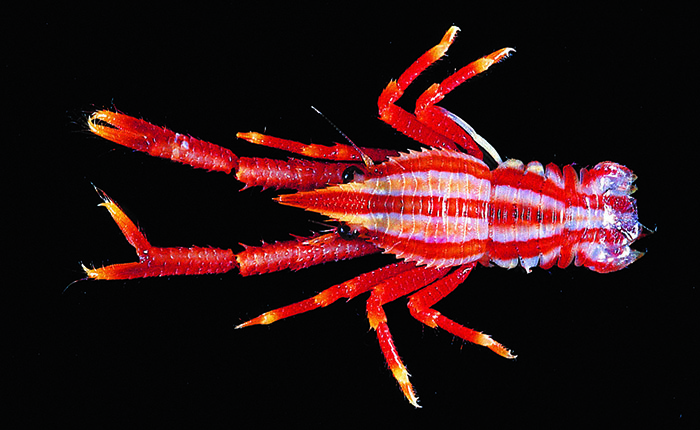This bewhiskered “Fairy Crab” is the tiniest teddy bear of the ocean

Bec Crew
Bec Crew

SOMEHOW THIS miniature hairy squat lobster ended up with a near-florescent pinkish-purple hue, little yellow eyes, and a thick golden fleece all over. And at just a few millimetres long, it’s as compact as it is adorable.
Seriously, just stop and consider how small that actually is – these things are smaller than your fingernail, which explains where they got their nickname ’fairy crab’ from.
Found off the coast of Western Australia, Indonesia, the Philippines, and Japan, the hairy squat lobster (Lauriea siagiani) makes its home on giant barrel sponges (Xestospongia testudinaria), where it sits and catches ocean detritus in its ‘fur’
It then uses its smaller, ’un-hairy’ legs to collect the particles and eat them. And it looks a whole lot stranger than it sounds:
Hair squat lobsters also use their tiny stature for mischief and steal their food from anemones – a risky affair, considering anemones wield toxins and are aggressively defended by their clownfish residents.
But if you’re small enough, maybe no one notices?
Despite its name, L. siagiani is not really a lobster, but instead belongs to a group of crabs called the Anomurans.
And like their close relatives, the hermit crabs, squat lobsters are missing a shell, which means they have to hide in the nooks and crannies of sponges to protect their soft bodies from harm.
They also instinctually wrap their tails up under themselves for protection, which gives them their distinctly squat appearance:

(Image Credit: T. Y. CHan and C. W. Lin)
Despite their beautiful colours and polka dotted arms, hairy squat lobsters aren’t even close to being the prettiest squat lobsters around.
Check out the aptly named elegant squat lobster (Allogalathea elegans) from northern Australia, the Indo-West Pacific, East Africa, and Fiji:

Allogalathea elegans. (Image Credit: T. Y. Chan and C. W. Lin)
And the squat lobster Munida thoe, which lives in the Southwest Pacific near New Caledonia:

Munida thoe (Image Credit: T. Y. Chan and C. W. Lin)
And here’s arguably the most beautiful squat lobster (and crustacean?) in the world, Galathea pilosa, found among the corals off the coast of French Polynesia:

Galathea pilosa. (Image Credit: The Moorea Biocode Project )
Of course, the most famous squat lobster would have to be the yeti crab – with its comically long and furry arms, golden colouring, and bizarre dance:
Scientists suspect that the movements stir up the water around the bacteria growing on their hairs, allowing fresh supplies of oxygen and sulphide to wash over them and ensure their growth.
Which would mean yeti crabs have figured out how to grow their own food on their bodies.
I’ll leave you with the better version of that footage:




